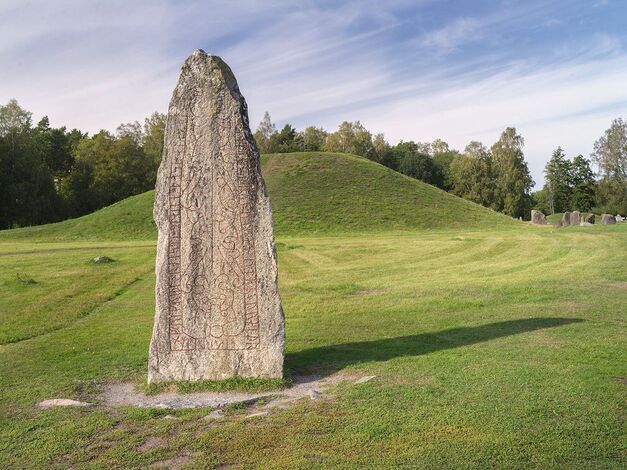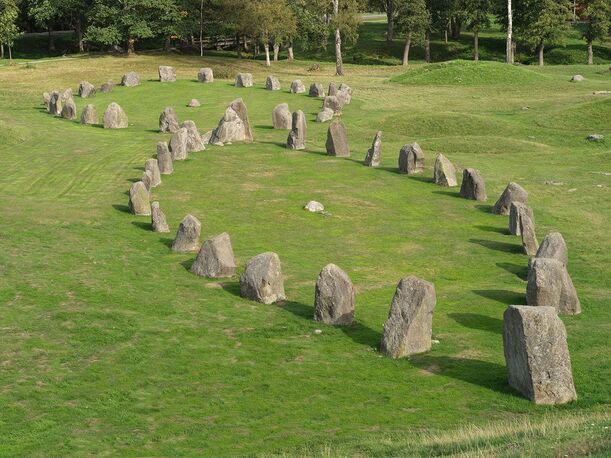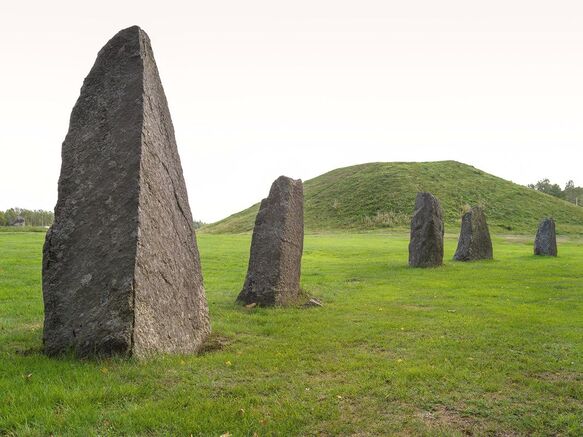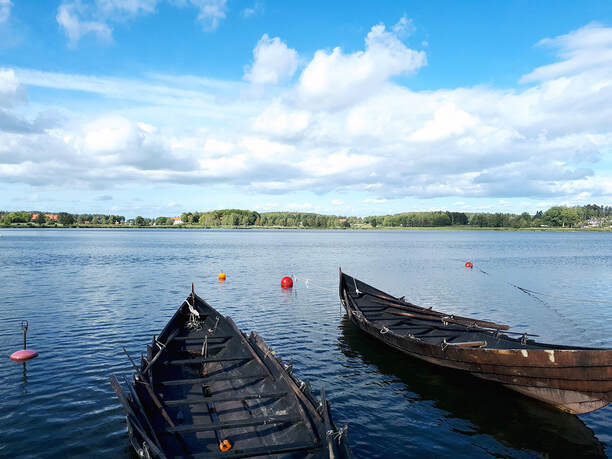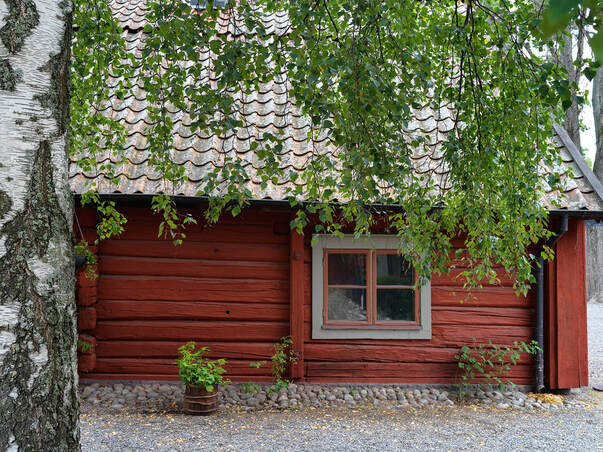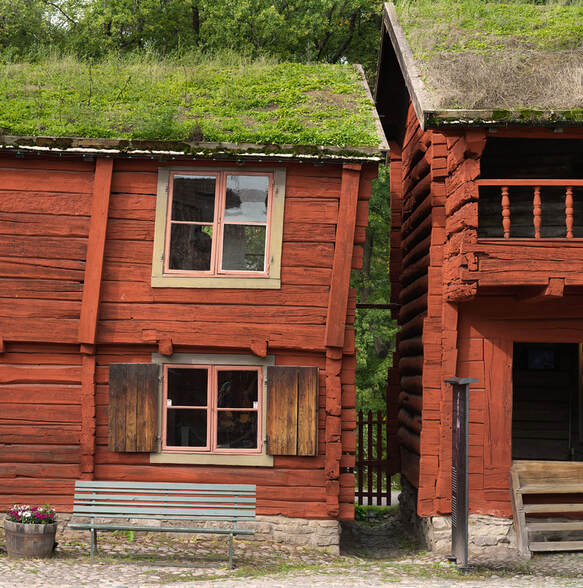We’re coming to the end of our stay in Sweden after an amazing week. The weather has been superb and we have taken full advantage to visit several of the nearby towns.
We have just returned from the city of Örebro to the west of Stockholm. We found a café near the city centre, Fratelli's, where I ate a wonderful gluten‐free pasta in pesto sauce. I may just have to move nearer so I could eat there again! And we only saw one of the three yarn stores in town too, so we definitely need to go back.
We have just returned from the city of Örebro to the west of Stockholm. We found a café near the city centre, Fratelli's, where I ate a wonderful gluten‐free pasta in pesto sauce. I may just have to move nearer so I could eat there again! And we only saw one of the three yarn stores in town too, so we definitely need to go back.
However, beyond wonderful food, amazing yarns and friendly people, we have been struck by the long history of the country. The photo at the top, for example, shows one of a line of stones that a wealthy merchant placed by the side of the road for the new King to see on his procession through the countryside about 1000 years ago.
Behind this runestone, there are several large burial mounds dating from the Iron Age, along with huge stones resembling Stonehenge but arranged in the shape of stone ships.
Behind this runestone, there are several large burial mounds dating from the Iron Age, along with huge stones resembling Stonehenge but arranged in the shape of stone ships.
The village near the burial mounds used to be situated at the edge of an inlet leading to the sea. However, the land has been rebounding since the end of the last ice age and in about AD 1200 access to the sea was cut off so the larger boats could no longer be used there.
You can still see evidence of the force of the ice as a 3km-thick ice sheet passed over the land, scouring the surface and depositing erratics across the landscape. The people who lived here didn't have to go far to find the stones for their monuments!
You can still see evidence of the force of the ice as a 3km-thick ice sheet passed over the land, scouring the surface and depositing erratics across the landscape. The people who lived here didn't have to go far to find the stones for their monuments!
Further down the coast, a collection of Viking ships and boats has been assembled along with reconstructions to show the type of vessels they would have used for transport, trade and warfare.
In Anna's photo here, two Viking rowing boats are moored by the Lake Mälaren harbour. These boats were often used to transport goods from one port to another or to take people across the lake to attend church.
In Anna's photo here, two Viking rowing boats are moored by the Lake Mälaren harbour. These boats were often used to transport goods from one port to another or to take people across the lake to attend church.
Moving forward in time, several of the towns have areas where buildings from the 17th and 18th Century have been preserved. The photo above shows one of the buildings in a conservation area in Anna's hometown, Eskilstuna. The area is called the Rademachersmedjorna or Rademacher's Forges after the Dutchman who established his forge here.
There is still a working forge at the site, and other buildings are used by weavers and artisans. We purchased a long woven table runner in blues and yellows and also saw some wonderful knitted mittens, scarves and gloves.
There is still a working forge at the site, and other buildings are used by weavers and artisans. We purchased a long woven table runner in blues and yellows and also saw some wonderful knitted mittens, scarves and gloves.
And this is the Wadköping area of Örebro. One small building had an information board outside saying that a poor shoemaker and 60 other people lived there! As in Eskilstuna, the area still feels very lived‐in as each of the buildings houses craftsmen, puppet‐makers or artists, so there is a lot to see and do as you walk around.
Well, tomorrow we start our journey back to the USA and I'm keen to try some knits incorporating the colours and sights from our trip. It is truly an inspiring country.
Many thanks to both Tim and Anna for their wonderful photographs for this blogpost. If you would like to see more of their work, you can find Tim on his Flickr site here, and Anna's Instagram site is here.
Until next time ‐ Happy knitting!
Moira
Well, tomorrow we start our journey back to the USA and I'm keen to try some knits incorporating the colours and sights from our trip. It is truly an inspiring country.
Many thanks to both Tim and Anna for their wonderful photographs for this blogpost. If you would like to see more of their work, you can find Tim on his Flickr site here, and Anna's Instagram site is here.
Until next time ‐ Happy knitting!
Moira
Last Blogpost: Postcard from Sweden – Collecting colours and umlauts Next Up: Autumn is upon us Our book: Reversible Knitting Stitches My Website: www.wyndlestrawdesigns.com |
Keywords: Travel Notes,
Sweden, history, standing stones, runestones,
Sweden, history, standing stones, runestones,
